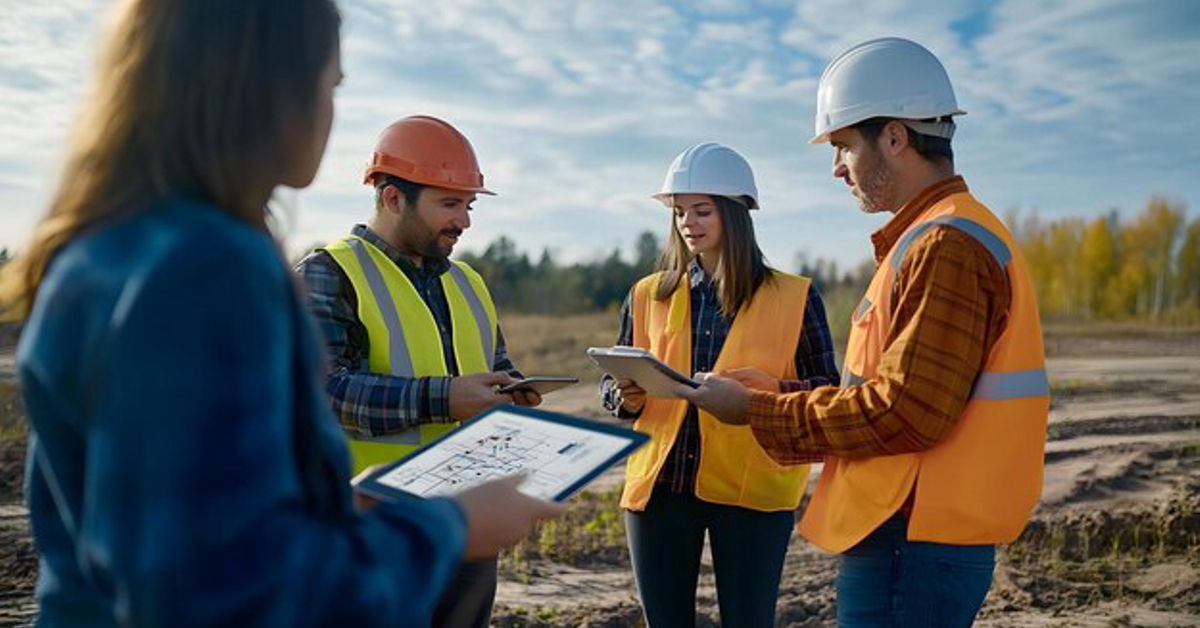A Phase 1 Environmental Site Assessment is a vital first step in identifying potential environmental liabilities on a property. Often required during real estate transactions or prior to land development, it helps buyers, lenders, and developers make informed decisions about Phase 1 Environmental Site Assessment Cost. This assessment is typically conducted by environmental consultants who evaluate historical records, site conditions and surrounding properties.
Importance of Phase 1 ESA
The main purpose of a Phase 1 ESA is to determine if a property shows signs of environmental contamination. If the assessment reveals potential issues, it could lead to more in-depth studies or cleanup requirements. This process protects property buyers and lenders from liability associated with hazardous waste or pollutants.
What Does a Phase 1 ESA Include
A Phase 1 ESA involves a comprehensive investigation of the property and its history. Key components include:
- Site inspection
- Review of historical aerial photos
- Environmental database research
- Interviews with current and past owners or occupants
- Review of local, state, and federal regulatory records
- Final report with findings and recommendations
Who Needs a Phase 1 ESA
This assessment is commonly needed by:
- Real estate investors
- Banks and lending institutions
- Property developers
- Industrial property buyers
- Government agencies
These entities require it to comply with legal obligations or as part of due diligence to avoid future liabilities.
Regulatory Background and Standards
Phase 1 ESAs follow standards set by the American Society for Testing and Materials under ASTM E1527. The Environmental Protection Agency also supports these standards as part of its “All Appropriate Inquiry” rule. Adhering to these standards ensures the findings are legally defensible.
Factors Influencing the Cost
Several elements contribute to the final cost of a Phase 1 ESA. These include:
- Location and geographic region
- Size of the property
- Type of land use (industrial, commercial, residential)
- Accessibility and site conditions
- Consultant experience and credentials
- Timeframe required for report delivery
Average Cost Range Across the United States
While prices vary depending on the factors mentioned above, the general cost range for a Phase 1 ESA typically falls between $1,800 and $6,000. Here’s a table to illustrate general pricing across regions:
| Region | Average Cost Range |
| Northeast | $2,200 – $5,500 |
| Midwest | $1,800 – $4,000 |
| South | $2,000 – $4,800 |
| West | $2,400 – $6,000 |
| National Average | $2,000 – $5,000 |
How Location Impacts Cost
The property’s location significantly affects the cost due to differences in labor rates, accessibility, and the availability of records. Urban areas with extensive development history often require more research, thereby increasing the cost. Rural areas may have fewer records but higher travel expenses.
Role of Property Size and Type
Larger sites demand more inspection time and additional documentation review, which raises costs. Similarly, industrial sites require more thorough investigation due to a higher likelihood of hazardous materials. Here’s how different property types compare:
| Property Type | Typical Cost Range |
| Residential Land | $1,800 – $3,000 |
| Commercial Office | $2,000 – $4,500 |
| Retail Properties | $2,200 – $5,000 |
| Industrial Sites | $3,000 – $6,000 |
Turnaround Time and Its Impact on Cost
Urgent assessments can cost more due to overtime labor or expedited document retrieval. Standard turnaround times range from 10 to 15 business days. If a report is needed in under a week, a premium charge may apply:
| Turnaround Time | Cost Adjustment |
| 15 Business Days | No additional charge |
| 10 Business Days | +5% to +10% |
| 5 Business Days | +15% to +30% |
Cost of Phase 1 ESA for Commercial Properties
Commercial properties typically fall into the mid-to-high cost range due to the complexity of operations and associated risks. Older buildings with unknown histories or previously industrial tenants often require deeper research, which increases the cost.
Phase 1 ESA Cost for Residential Land Development
While generally less expensive than commercial assessments, residential developments that involve subdividing land or building on previously undeveloped plots can still require thorough analysis. Prices often depend on lot size, zoning changes, and proximity to known contamination sources.
Cost Comparison Between Phase 1 and Phase 2 ESA
A Phase 1 ESA identifies potential concerns. If contamination is suspected, a Phase 2 ESA is needed to conduct physical testing. The cost difference between the two can be substantial:
| Assessment Type | Typical Cost Range |
| Phase 1 ESA | $2,000 – $5,000 |
| Phase 2 ESA | $6,000 – $25,000+ |
How to Choose a Qualified Environmental Consultant
Selecting the right consultant is crucial to ensure compliance and accurate reporting. Look for:
- Professional credentials (PE, PG, or environmental certifications)
- Experience in local assessments
- Strong reputation and reviews
- Transparent pricing
- Familiarity with ASTM standards
How to Get Accurate Quotes
To get a fair estimate, provide consultants with detailed information:
- Site address and parcel number
- Type of property and past usage
- Timeline for report delivery
- Access availability for site inspection
Getting at least three quotes allows comparison of not only cost but also scope and timeline.
Ways to Reduce Assessment Costs Without Compromising Quality
While it’s important not to cut corners, you can reduce costs by:
- Bundling services if you need Phase 2 ESA
- Providing all known documents upfront
- Scheduling assessments in advance to avoid rush fees
- Choosing consultants with local offices to minimize travel costs
Importance of Historical Records in Phase 1 ESA
Historical records provide critical information about prior site usage, which can indicate potential contamination. These include:
- Aerial photographs
- Sanborn fire insurance maps
- City directories
- Building permits
- Previous environmental reports
Real-World Cost Breakdown
Consider a mid-size commercial site in an urban area. The property is approximately 2 acres and was previously used as a dry cleaner and auto repair shop. Here’s a breakdown of costs:
| Cost Component | Estimated Amount |
| Consultant Fee | $3,200 |
| Historical Research | $400 |
| Database Access | $250 |
| Travel and Inspection | $300 |
| Report Preparation | $850 |
| Total | $5,000 |
Common Pitfalls to Avoid
- Choosing a consultant solely on price
- Not verifying credentials or references
- Failing to disclose known issues
- Delaying assessment until the last minute
- Overlooking the need for a follow-up Phase 2 ESA
Conclusion and Call to Action
Understanding the cost of a Phase 1 Environmental Site Assessment helps you plan effectively and avoid surprises during property transactions. The investment in a qualified consultant ensures legal protection, peace of mind, and a smoother project timeline.
If you’re preparing for a real estate transaction or development project, now is the time to get a professional Phase 1 Environmental Site Assessment Cost. Contact a certified environmental consultant today to get a detailed quote tailored to your needs.
FAQ Section
What is the typical turnaround time for a Phase 1 ESA ?
Most reports are completed within 10 to 15 business days.
Do all properties require a Phase 1 ESA ?
Not all, but it’s essential for commercial transactions, refinancing, or development projects.
Can I skip a Phase 1 ESA if the land is undeveloped ?
It’s not recommended. Even vacant land may have historical uses that present contamination risks.
Is a Phase 1 ESA legally required ?
While not always mandated, lenders and investors often require it for due diligence.
What happens if contamination is found ?
A Phase 2 ESA will be needed to test soil, water, and air quality.
How long is a Phase 1 ESA valid ?
Typically up to 180 days, after which an update may be required.
Can I reuse a Phase 1 ESA from another buyer ?
Only if the report is under your name and prepared according to current standards.







